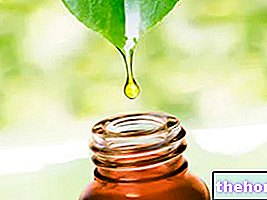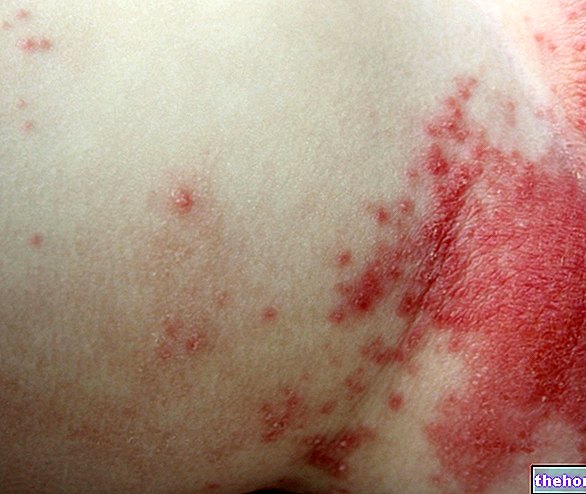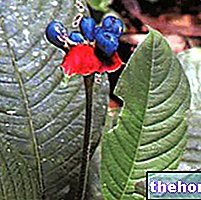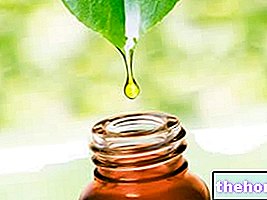Goodnight grass
Among the so-called goodnight herbs we cannot forget the red poppy, commonly known as rosolaccio. Celsus also describes the plant for its marked sedative action: from his writings it can be inferred that boiling the red poppy in dried grape wine produces a useful drink to promote falling asleep.

In the context of ancient folk medicine, the infusion or decoction of red poppy was also useful for counteracting coughs, alleviating bronchial irritations, and decreasing bluetongue and rheumatic fever. [adapted from Dictionary of Phytotherapy and Medicinal Plants, by E. Campanini]
Before discussing the active ingredients and phytotherapeutic properties attributed to red poppy, we will briefly analyze the plant from a botanical point of view.
Botanical analysis
The red poppy is a delicate and delicate herbaceous plant belonging to the family of Papaveraceae; its height generally does not exceed 60-80 centimeters. The stem of the rosolaccio, erect and hairy, shows non-enveloping toothed leaves, with pointed or oblong lobes, deeply divided into lanceolate segments. The slender stem features unmistakable flowers, with a typical purple-red dress stained internally by a small black imprint. When the petals, hidden inside green sepals before blossoming, fall, they give life to a small glabrous capsule (fruit).
The flower, simple but beautiful and elegant, is very common both in cultivated fields (especially wheat) and in uncultivated ones, and it grows up to 1,700 meters above sea level: so much so that the red poppy is also considered a weed.
Chemical analysis
Being an exponent of the Papaveraceae, the red poppy also contains alkaloids: the whole plant - except for the seeds - contains roeadin and other isoquinolic alkaloid molecules. The aerial parts abound in protopin (also present in the roots), sanguinarine, coptisin and cheleritrina.
Among the other chemical components there are also mucilages and anthocyanins, responsible for the blood red color of the petals (in this regard, anthocyanins are also used as dyes).
An oil rich in linoleic, stearic, palmitic and oleic acid is obtained from the seeds.
In phytotherapy, the most exploited part of the plant is represented by the petals.
[chemical composition of the red poppy taken from Dictionary of Phytotherapy and Medicinal Plants, by E. Campanini]
Although the red poppy and the opium poppy belong to the same family, the phytocomplex is very different: in addition to the absence of morphine, codeine and papaverine (molecules that characterize the phytocomplex of the species somniferum), the whole red poppy plant is made up of latex that is very different from that of the other species.
Uses and therapeutic activities
In the introductory part of the article we mentioned the most important properties associated with the red poppy: below they will be analyzed in more detail.
First of all, given that poppy is a "bedtime herb, one of the most important medicinal virtues is undoubtedly the sedative one: in particular, poppy extracts are indicated in the formulation of natural products favoring the sleep of infants. poppy extracts can be combined with the phytocomplex of other sedative drugs, in order to enhance their final effect. In addition to the pediatric age, red poppy-based products are also recommended for senescence, considering that the side effects of the drug are almost nil.
The sedative activity is not the only one ascribed to the phytocomplex: the red poppy is widely used for its bechiche properties, that is to say useful for counteracting cough in general: therefore, it is recommended to counteract whooping cough, to calm cough and to relieve acute catarrhal bronchitis.
The antitussive activities are made by the active principles extracted from the flowers, able to favor expectoration and, at the same time, to calm the spasm.
Lastly, the red poppy extract proved to be an excellent diaphoretic, useful for lowering flu fever, favoring sweating.
By applying the extract on site - in the form of ointments or ointments - the red poppy is used as a soothing and anti-reddening on irritated and reddened skin.
Finally, anthocyanins obtained from red poppy flowers are used as a dye.
Side effects
In general, the use of red poppy in phytotherapy is almost harmless. Clearly, during pregnancy and breastfeeding, the advice of a doctor is recommended before taking red poppy extracts.
Considering the sedative action, concomitant intake of hypnotic-sedative substances is not recommended.
Synergistic action
Examples of synergy between red poppy and other drugs
Herbal teas with sedative action:
- Red poppy
- Chamomile
- Mauve
- Passionflower
- No corrigens drugs are necessary because the taste is quite pleasant
Herbal tea against cough (expectorant action):
- Licorice → good flavor + expectorant activity
- Ballota → antitussive + sedative (bitter drug)
- Red poppy
Red poppy in brief, summary "
Select plant Fir Acacia Acerola Sorrel Yarrow Yarrow Yarrow Aconito Adatoda Garlic Agnocasto Agrimonia Alchemilla Alkekengi Aloe Altea Witch Hazel Ammi or Visnaga Pineapple Andrographis Anemone Pulsatilla Angelica Anise Star Anise Japanese Star Anise Bitter Orange Bitter Areca Arnica Harpagophytum Arpagophyte Artemisia Asteragus Basil Asparagus Asparagus Peruvian Asparagus Asparagus Asparagus Hawthorn Boldo Borage Shepherd's Purse Boswellia Bucco Butea superba Cocoa Coffee Cajeput Calamus Calamus Marigold Camedrio Chamomile Roman Chamomile Camphor Cinnamon Ceylon Maidenhair Capuchin Artichoke Cardamom Cardiac Thistle Asian Thistle Carvi Cascara Cassia Catecu Catha Cabbage Celandine Chicory Centaurea Cinnamon Cypress Celandine Chives Cypress Coca Cola Colchico Combreto Condurango Comfrey Coriander Cranberry Barberry American Chrysanthemum Cumin Turmeric Damiana Digital Dioscorea Drosera Dulcamara Dunalilella Echinacea Eder a Ephedra Elenio Eleutherococcus Helichrysum Evening primrose Horsetail Alfalfa Erica Euphrasia Erisimo Escolzia Eucalyptus Farfara Farfaraccio Calabar bean Fenugreek Fennel Phytolacca Frangola Ash Fumaria Japanese Mushrooms Galega Ganoderma lucidum Garcinia Cambogia Mulberry Gentian Broom Ginkgo Ginkgo Guipana Guipana Gynestra Ginkgo Hibelia Gymnasium Hibiscus Guarulp St. John's Wort Horse Chestnut Ispaghul Hyssop Jaborandi Kava kava Konjac Laminaria Cherry Laurel Lavender Lemongrass Lespedeza Lovage Icelandic Lichen Lemon Flax Lippia Licorice Lobelia Hops Maca Marjoram Maize Mallow Manna Marrubio Marrubio d "water Matè Melaleuca Meliloto American Lemon balm Myrtle Myrama Walnut Nutmeg Walnut vomica Olive tree Meadowsweet Ononide Opuntia Oregano Orthosiphon Nettle Poppy Papaya Parietaria Feverfew Passiflora Chilli Perilla Periwinkle Phyllanthus Plantain Picrorhiza Pilosella Pino Pisci dia Podofillo Polygala Grapefruit Parsley Psyllium Pueraria mirifica Butcher's broom Pygeum Quassia Oak Rhubarb Ratania Rauwolfia currant Castor bean Rhodiola Rosehip Rosemary Rue Willow Sarsaparilla Sage Elderberry Sassafras Sedum Ergot Senna Serenoa Repens Soybean Solidago Tansy Taraxus Tamarind Tamarind Tamarind Tamarind Tamarindo Ursina Valerian Vanilla Mullein Verbena Veronica Viburnum Vinca Pansy Mistletoe Vine Withania Yohimbe Saffron Ginger Pumpkin Select disease Juvenile Acne Rosacea Tinnitus Tinnitus Aerophagia Tendon Affections Afonia Aphthae Algias Functional Halitosis Breastfeeding Allergy Anemia Anguish Anxiety Arteriosclerosis Asthrosis Asthrosis Arthritis Arthritis Men Sex Woman Blepharitis and Conjunctivitis Eye bags Bronchitis Gallstones Kidney stones Salivary stones Baldness Androgenetic Candida Fragile hair Caries Headache Cellulitis Motion sickness Cystitis C limaterio Cholecystopathy High cholesterol Ulcerative colitis Colonoscopy Contusions Hematoma Convalescence Couperose Depression Dermatitis Diaper dermatitis Diabetes Diarrhea Erectile dysfunction Dyslipidemia Dysmenorrhea Dyspepsia Disturbances of vision Hemorrhoids Epistaxis Herethism Heart disease Fever Fibromyalgia Gastro-intestinal disease Flatulence Hypertension Fibromyalgia Gastrointomnia Jaundice Laryngitis Renal lithiasis Toothache Sore throat Thinness Menopause Meteorism Mononucleosis Alzheimer's disease Crohn's disease Nausea Vomiting Obesity Dark circles Onychomycosis Osteoporosis Dry skin Periarthritis Piorea Low pressure Prostatitis Psoriasis Colds Breast fissures Anal fissures Gastro-nasal rhinitis Senescence Premenstrual Syndrome Sinusitis Quit smoking Overweight Fatty liver Constipation Stomatitis Stress Cough Triglycerides high Ulcer Burns Nails Brittle flashes Heat Warts Dizziness Properties herbal Tanning Abortive adaptogenic Aphrodisiac bittering analgesic anesthetic anorectics analgesic antacid anti-allergic anti-asthmatic Antibiotic catarrh Anticellulitiche anticonvulsant Antidiaforetiche antidiarrheal edematous anthelmintic antiemetic Antiemorroidarie antiphlogistic Antiidrotiche Antinevrotiche Antioxidants antipyretic antirheumatic antiscorbutic Antiseptic antispasmodic anti-uric Aperitive Flavoring Astringent Balsamic Bechiche Capillarotrope Cardiotonic Carminative Cathartic Caustics Healing Cholagogues Choleretic Dyes Decongestants Deodorants Purifying Diaphoretic Cleansers Disinfectants Detoxifiers Thirst quenching Diuretics Exciting Emetics Emmenagogues Emollients Hemostatic Energies Hepatoprotectors Expectorants Eupepticus Moisturisers Galactosensitizers lanti Hypertensive Hypnotic Hypoglycemic Hypotensive Irritants Laxatives Soothing Narcotic Nerves Nutrients Odontalgic Pectoral Purgative Revulsive Remineralizing Refreshing Rubefacient Scialagoghe Sedative Soporifugas Sneezing Stomachic Stomatics Narcotic Vascular Tightenitis




























